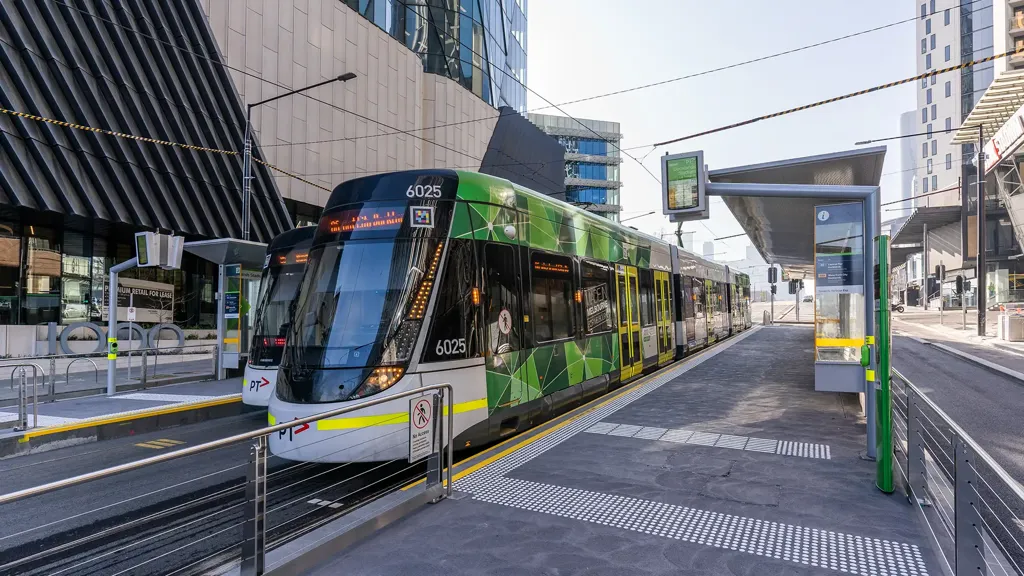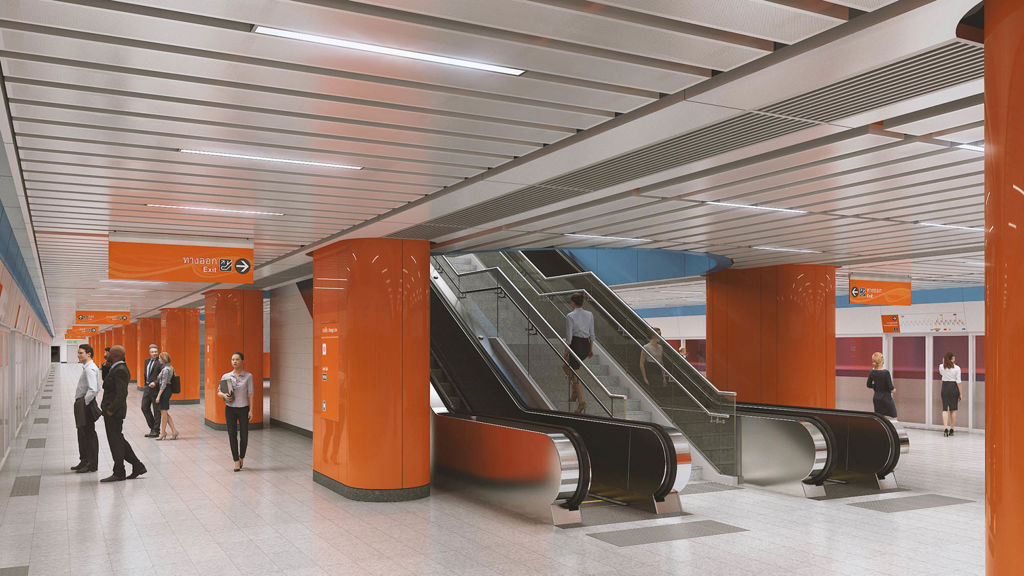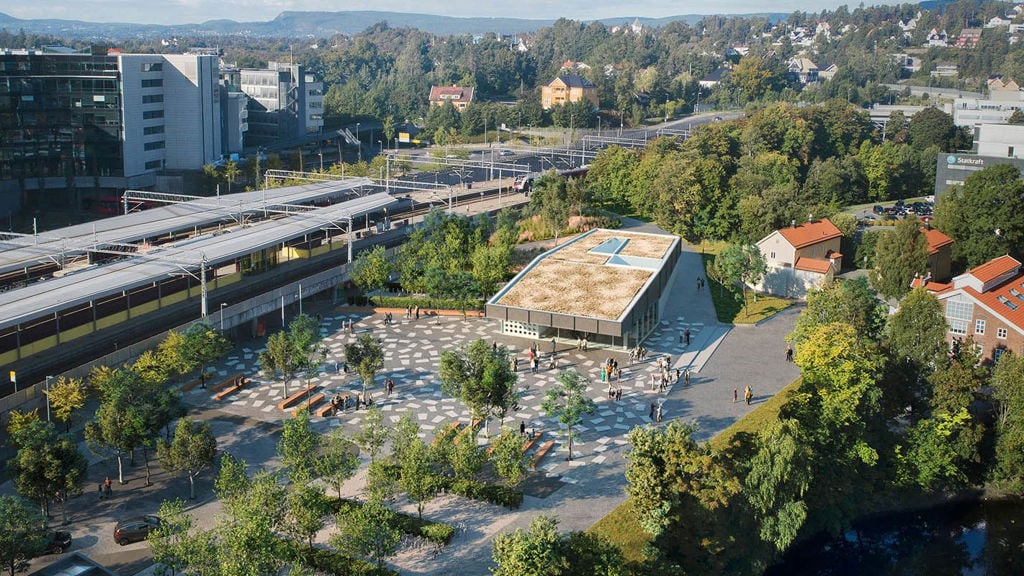Delivering a pioneering infrastructure project for London Luton Airport – Luton DART
Luton DART

The Luton DART (Direct Air-Rail Transit) is a pioneering fully automated people mover, deigned to transport travellers from Luton Airport Parkway railway-station to London Luton Airport in under four minutes.
The new airport transfer facilitates faster journeys from over 60 locations across the rail network, with the passenger journey from London St Pancras to London Luton Airport now lasting just 32 minutes, one of the shortest airport connections from central London. Passengers are provided with a speedier, greener, and more efficient journey to the UK’s fifth busiest airport, helping to radically reduce passenger and employee airport trips by car and support delivery of the airport’s sustainability targets.
Luton DART marks a significant investment in the town’s civil infrastructure by Luton Borough Council’s airport company Luton Rising. Arup played a key role working alongside Luton Rising on this landmark infrastructure project from the outset, assembling a team of architects, engineers and specialists to help meet the client’s hopes for a world class airport experience. Our role has covered all aspects of the planning, costing, procurement, and design, including station architecture, operating systems and operational readiness.

Infrastructure contributing to the transformation of Luton
The DART is one of the largest infrastructure projects ever undertaken in the area and represents Luton Rising’s ambition to deliver positive social impact and economic growth in Luton. As the airport grows and generates a return, there is a direct benefit to the local community.
It forms a wider development of housing, hotel and other facilities being built around Bartlett Square, fostering community and employment. Operating 24 hours a day, DART will help boost the rail modal share for the airport’s passengers and support Luton’s vision for a carbon-neutral town by 2040.
The electric-powered system will lessen the environmental impact of journeys both to and from the airport and reduce congestion on surrounding roads. It will also provide rail passengers with an improved experience and offer seamless journeys covering the Thameslink and East Midlands Railway network. The DART’s timetable is optimised to ensure a high frequency of service during busy passenger peaks and a reduced running pattern during quieter periods to save energy.
Scheme design
The scheme comprises two stations, a viaduct, a signature bridge and a ‘cut-and-cover’ tunnel beneath a live taxiway. Our ambition was to create a sense of place for passengers, with intuitive and easy-to-navigate spaces. DART Parkway and Central Terminal stations are characterised by a simple and functional style that deliver a consistent, high quality and unified experience from start to finish.
It begins at Luton Airport DART Parkway Station’s concourse level and ends with a seamless passenger transfer at the Central Terminal Station. The accessible design includes new lifts, escalators, tactile paving, audio frequency induction loops and help points.
The two stations create a new identity for Luton Airport, with signature parasols repeated across the wider development. Each parasol is held by a single centrally loaded column and cantilevers across 20m in width, protecting passengers from the elements whilst allowing for a spacious and naturally lit concourse. The task required collaborative engagement for our architects, engineers, and experts across disciplines to formulate a synthetic whole design.
Transport architecture
Arup’s design considered likely changes to the airport’s requirement through the long life of the structural assets and made accommodation for a variety of future systems, including airport expansion, operating more trains and additional passenger facilities. Carriages can be added to the DART as passenger numbers increase, with platforms designed to facilitate longer trains and minimise the need for disruptive and costly future construction.



Both DART Parkway and Central Stations are naturally ventilated throughout the concourse and platforms, lowering the stations’ operational carbon footprint against a mechanical approach. The transport system is powered by an efficient electric drive system, incorporating energy recovery during braking. The energy can be consumed in the vehicle (HVAC) and in the station facilities, reducing energy consumption of the whole system.
The stations’ design with highly reflective parasol cladding maximises daylight and aims to improve passenger and staff wellbeing. At DART Parkway Station, façade glazing has been designed to minimise solar gain whilst maintaining excellent levels of light transmittance.
We appointed Arup recognising that they offer a full professional service; designers, planners, engineers and technical experts. They have worked across all areas and in every phase of our project with outstanding professional commitment and have delivered what is our most exciting project yet, creating an architectural landscape within an infrastructure project and achieving this within an audacious timescale.
Robin Porter
Chief Executive Luton Borough Council
What we delivered
-
Providing travellers with a speedier, greener, and more efficient journey to the UK’s fifth busiest Airport.
-
Delivering a positive social impact and economic growth to the people of Luton.
-
The two stations have created a new identity for Luton Airport, delivering a consistent and unified architectural experience for all passengers.
Get in touch with our team
Projects
Explore more architecture projects:

Improving accessibility and user experience for tram stops in Melbourne
La Trobe Street Tram Stop Upgrades, Australia

Copenhagen's M4 metro line extension: five new stations to improve city connectivity
Copenhagen M4 metro line to Sydhavn and Valby, Denmark

A vital link from Bangkok’s city centre to the east
MRT Orange Line East Section, Thailand

Enhancing the passenger experience at Oslo’s Lysaker metro station
Fornebubanen Oslo Lysaker Station, Norway
Get in touch with us
If you'd like to speak to one of our Architecture experts about any of the issues raised on this page or a potential collaboration then please get in touch by completing the form.

